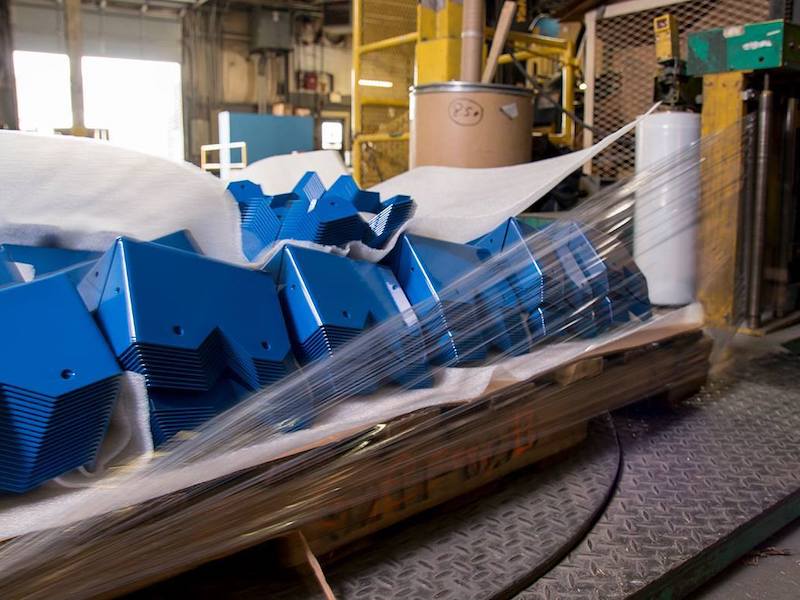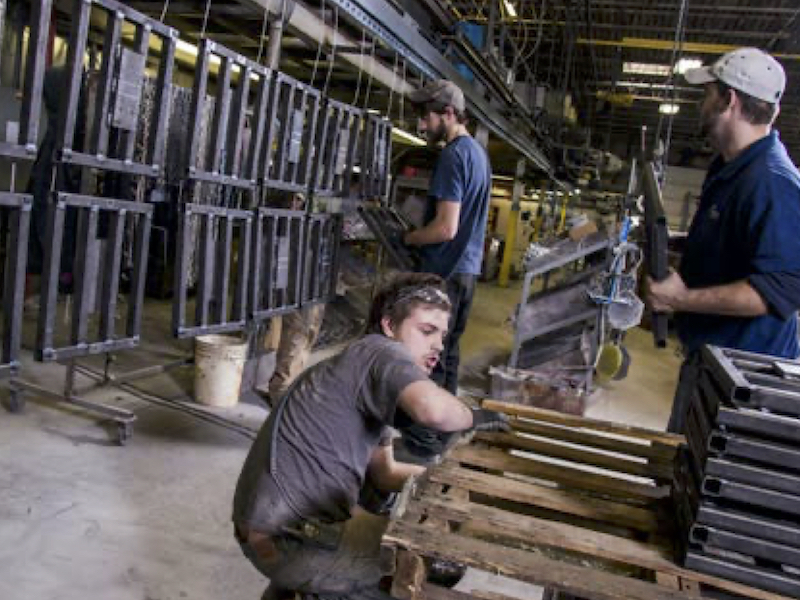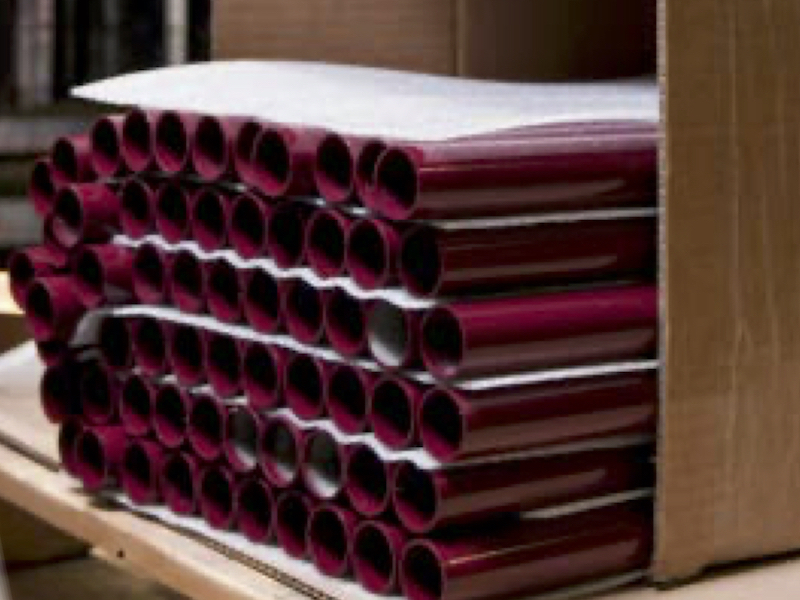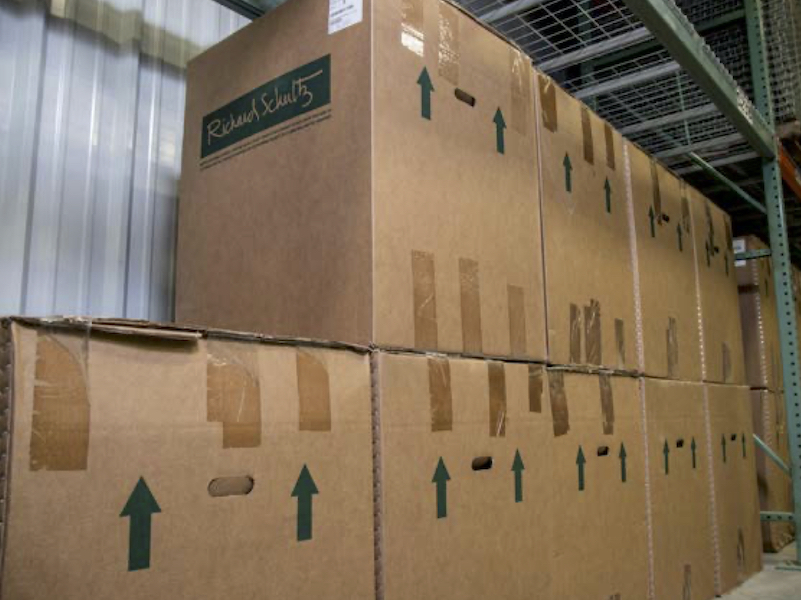There’s a delicate balance that has to occur between customer service, cost of shipping and handling, product protection, and efficiency in delivery. Finding that balance requires constant adjustments in the logistics and packaging model. Smart businesses continuously re-examine their operations to improve, even if it means looking outside their industry, and outside the box.
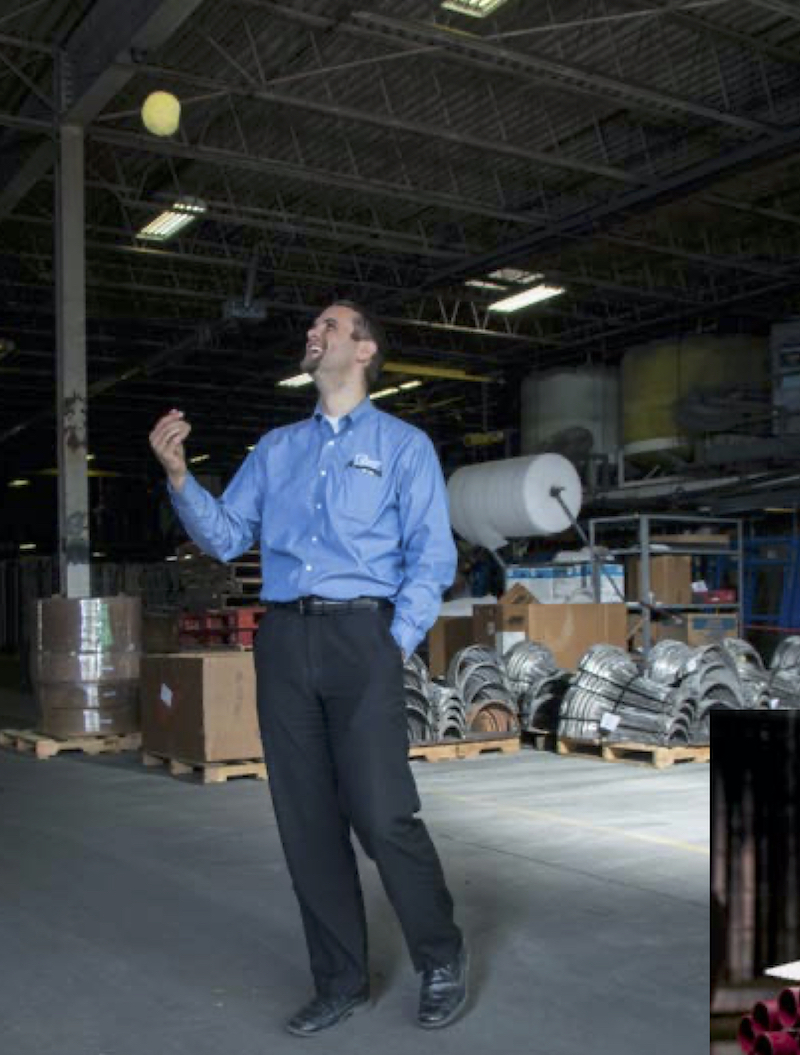 Rick Gehman tosses a ball made of foam modeling clay. He noticed his son playing with the material and became curious about its potential as a packing medium.Sometimes it’s way outside the box.
Rick Gehman tosses a ball made of foam modeling clay. He noticed his son playing with the material and became curious about its potential as a packing medium.Sometimes it’s way outside the box.
On a recent weekend, Rick Gehman, president of Keystone Koating in Lititz, PA, — one of the family companies of Paul B. Zimmerman, Inc. — watched his young son play with model foam putty, a sculpting medium made of tiny, colorful polystyrene beads that can be easily shaped and stick to some surfaces. As his little one formed different objects with the putty, Gehman realized this “toy” just might have a role in his company’s logistics plan.
The putty could stick to and buffer some of the metal products his company powder coats each day, providing friction to prevent movement, without marring the surface in transport.
“Keystone has the capacity to provide a number of different packaging options, ranging from the basic parts on a pallet with shrink-wrap and banding, to customized palletizing and packaging,” Gehman says.
His production managers and customer service reps continuously brainstorm to improve the company’s logistics and packaging process. It just might be that the next brainstorming session involves examining model foam putty.
Packaging Tools
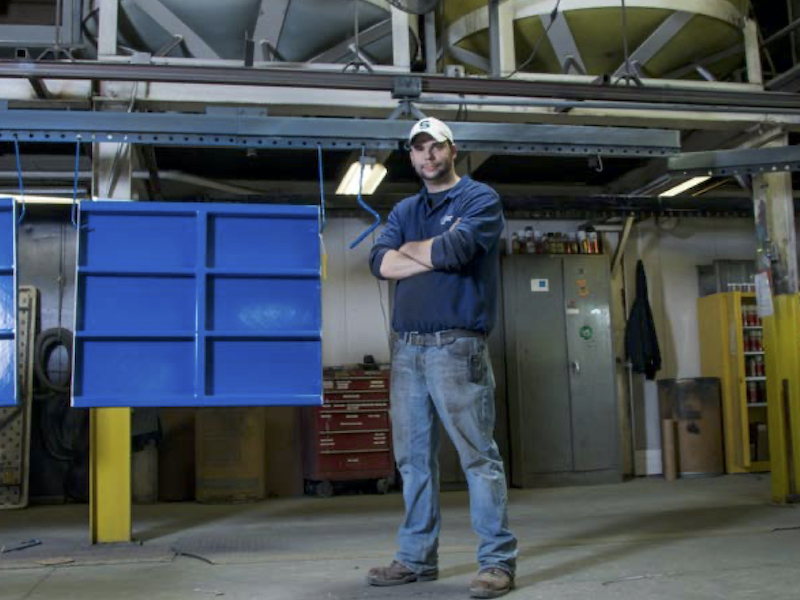 Supervisor Jared Miller has staff cool the items by either using industrial fans or by working the packaging of that line around staff breaks.Boxing: Stray from the norm if it means better boxing. For instance, after thin-wire animal cages are powder coated, they are arranged in a box that is lifted and turned on its side. That is, the “bottom” of the box becomes its side so the cages aren’t stacked on top of each other and the metal isn’t bent by its own weight.
Supervisor Jared Miller has staff cool the items by either using industrial fans or by working the packaging of that line around staff breaks.Boxing: Stray from the norm if it means better boxing. For instance, after thin-wire animal cages are powder coated, they are arranged in a box that is lifted and turned on its side. That is, the “bottom” of the box becomes its side so the cages aren’t stacked on top of each other and the metal isn’t bent by its own weight.
Examine how your product arrives. Recycle that box and replicate its original packaging without compromising shipping quality.
Place a corrugated cardboard pad on each skid to protect the product before loading it onto the skid. It prevents any rough surfaces on the wood from damaging products and it also alleviates movement during shipping.
You can find boxes that are anti-static, weather-resistant, insulated, and more. Balance protection with cost-effectiveness.
Padding/Cushion: Cardboard corners or foam squares can buffer layers of product. Combine corrugated cardboard with polypropylene foam sheets of various thickness for extra protection. At Keystone Koating, they use tiles created by their staff to protect layers of product.
Foam sheets protect from scratches and create friction to prevent movement during delivery. Cro-nel, a combination of foam and paper, is another option.
Sealing: Shrink wrap can seal items together to prevent movement and also serves to keep dirt out. Seal products individually and then seal an entire skid for optimal protection. Banding straps around skids prevent movement during shipping. Twine or wrapping tape may be used also.
Fillers: Packing peanuts, foam, bubble wrap, air-filled pillows, or molded pulp may offer ideal protection, however, these supplies require a lot of storage space. Some of these options may be more costly than boxing and sheets of polypropylene padding.
Freight
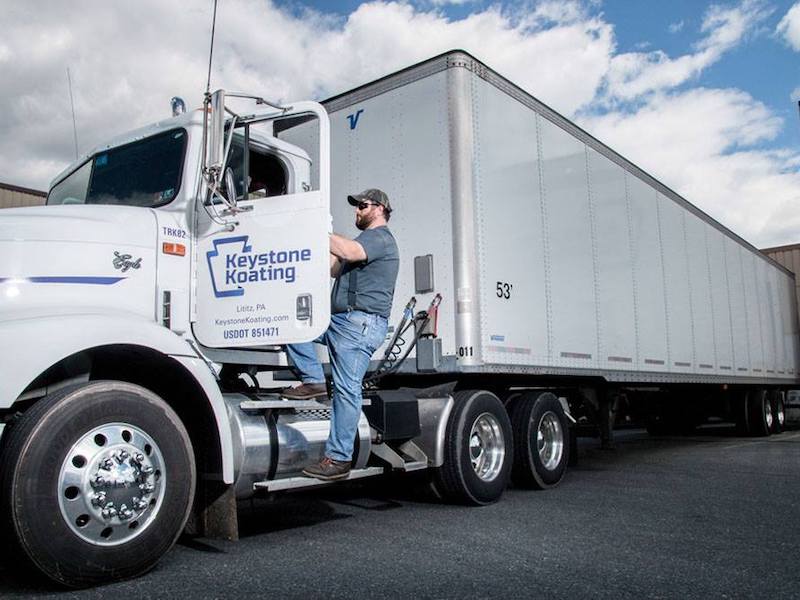 Manufacturers may benefit from providing their own transportation of the product to the customer which allows flexibility and certainty of intact delivery.Fleet service: The company that provides transportation/delivery services can save money for the customer/consignee, but being open to a customer’s preference for private carriers could be an asset in gaining a client.
Manufacturers may benefit from providing their own transportation of the product to the customer which allows flexibility and certainty of intact delivery.Fleet service: The company that provides transportation/delivery services can save money for the customer/consignee, but being open to a customer’s preference for private carriers could be an asset in gaining a client.
Storage and warehousing is a value-added service. If a run takes more than one delivery and the customer prefers to wait a day or two until another truck can be sent, free warehousing is an attractive amenity.
Discuss how freight sizes will be billed and make it a part of your customer service plan to either ensure no adjustments or to allow for adjustments. Make your policy clear. Freight size can be measured by weight or cube (volume of the freight). Sometimes a load might arrive in one truck but, due to protective packaging to avoid exceptions/ damage, it might “cube out” when the production run is loaded for delivery. Another truck might be needed because the load now exceeds its volume. Here, the weight won’t be a concern but cube will be. It can be referred to as a “skid spot” issue.
Nesting — stacking smaller products inside larger products — can solve some “cube out” issues in less-than-truckload shipping and make it more cost-effective. Incorporate nesting into your packaging and logistics plan if it does not compromise successful deliverability. Free warehousing may ameliorate the cube-out issue.
Drop-ship logistics are appealing; instead of warehousing its goods, a retailer sends customer orders to a manufacturer or wholesaler who then delivers the goods to the customer directly. A variation of this is how Keystone Koating picks up products at Bond Machine, coats it, and then delivers to PA Scale each week.
The best tools for your logistics and packaging plan is flexibility. Sometimes a product run at Keystone Koating is still hot from curing. Staff will run large fans on the product and schedule breaks around its cooling before any of it gets packaged.
“Packaging and logistics are always a point of discussion,” said Gehman, “and they have been ever since this company was founded. The knowledge gained has always been passed down from leadership to leadership. There will always be team discussion and customer feedback will always play a pertinent role in our packaging and logistics plan.”




